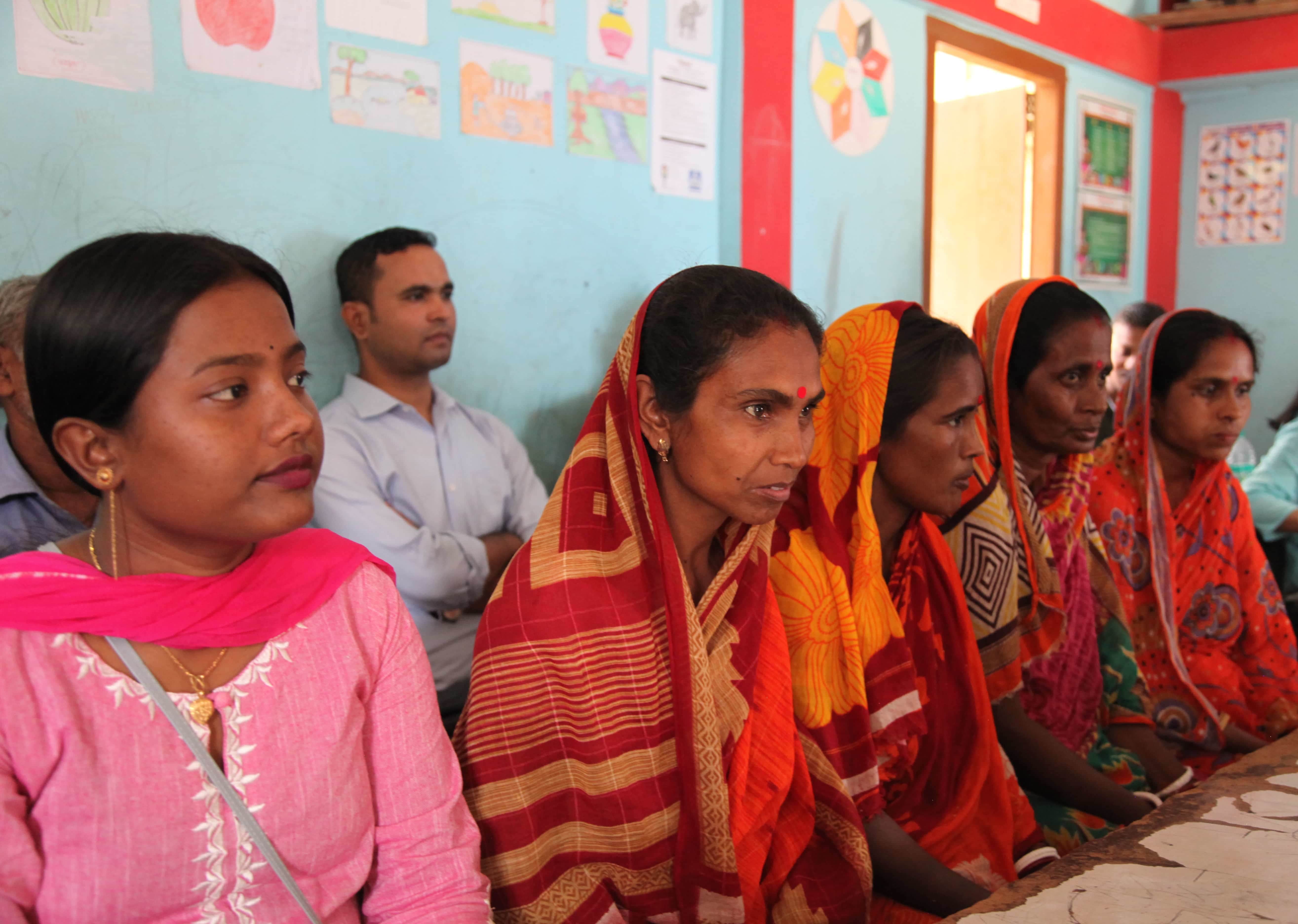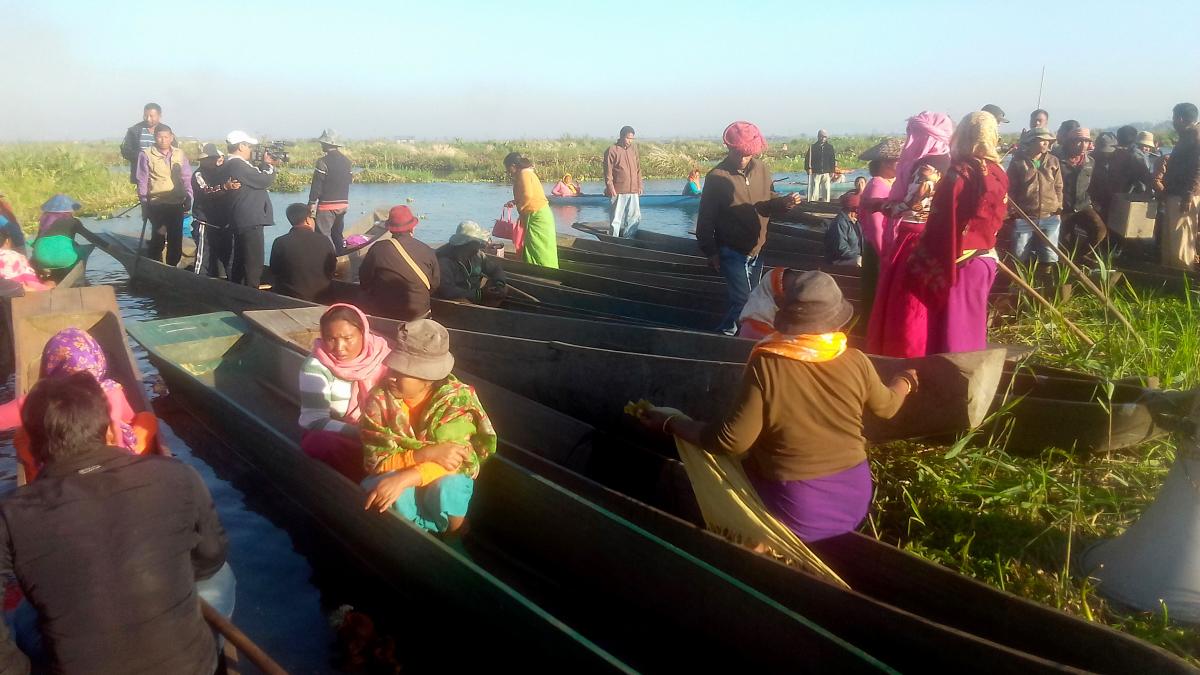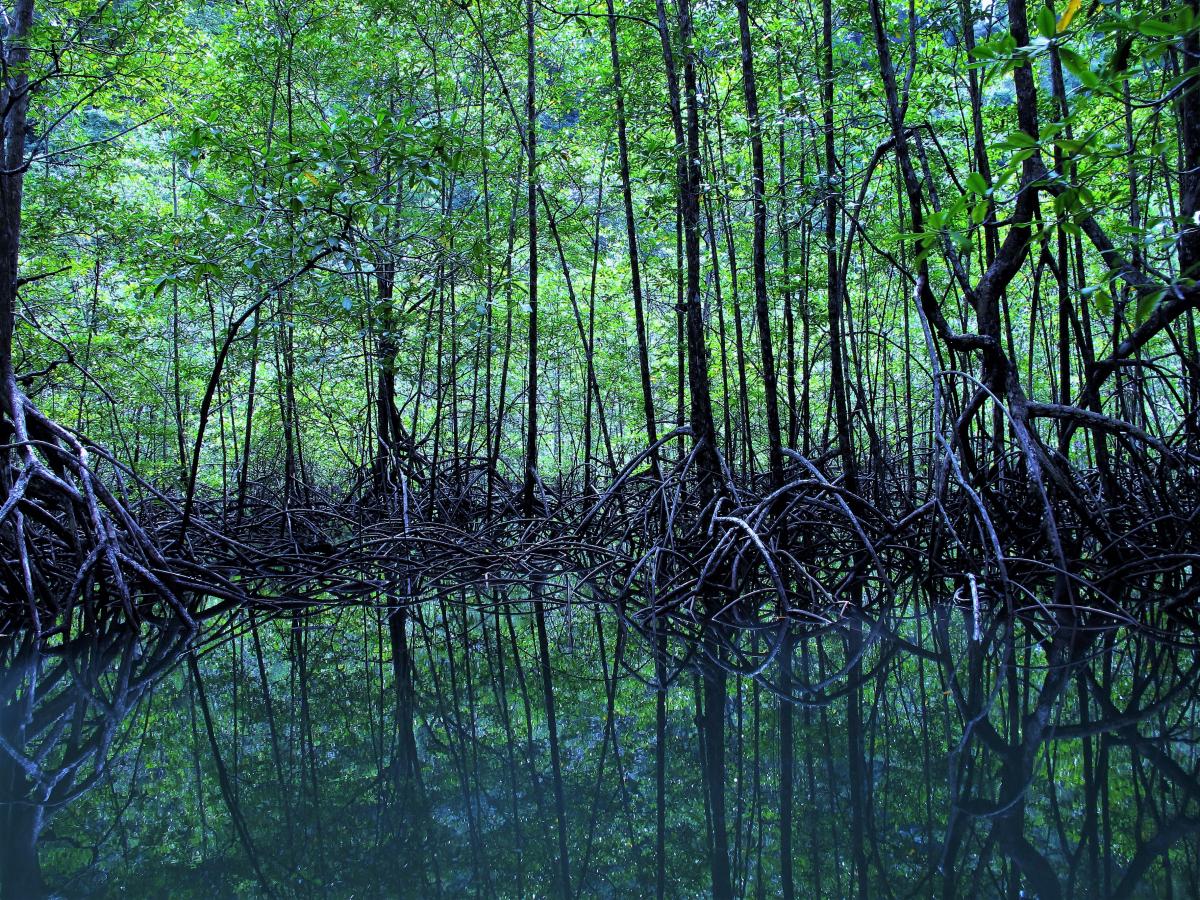
Mr Mukta Ram Deka, Project Manager, State Disaster Management Authority, Guwahati, Assam, discussed opportunities for integrating NbS in Assam disaster management plans
Photo: IUCN Asia
Over 40 participants from government agencies including Assam Science Technology and Environment Council, Assam State Disaster Management Authority, and representatives from the Water, Forest and Agriculture departments, as well as from academia, were introduced to ecosystem services and NbS. Ecosystem services assess the natural environment’s contribution to quality of life, while NbS provide actions that address well-being and biodiversity benefits.
The design of NbS requires a full understanding of the interaction between society, economy and ecology at the landscape or river basin scale, as well as the engagement of different sectors and stakeholders in the design and implementation of these solutions. During the event, participants discussed challenges and opportunities for mainstreaming these concepts in the planning process of Barak valley, located in the southernmost region of Assam.
"To ensure policy uptake of NbS, we need to document successful examples and case studies which are relevant for the Barak valley and share these with policymakers at the highest level," emphasised Ms Priyanka Sarkar, Consultant, NITI Aayog, member of the Youth for Meghna Network setup by IUCN.
Known for its rich aquatic biodiversity, the Barak River is the main source of water for the Meghna River basin, shared by India and Bangladesh. However, degradation of wetlands and forests, caused by urban sprawl and agricultural expansion, is reducing the ecological buffer that could mitigate some of the impacts of climate change-induced heavy rainfall. Increasing use of chemical fertiliser has also affected soil health and contaminated the river. This has put more pressure on the fishing and agriculture sectors that have sustained the livelihoods of millions and contributed to India ranking among the top five global exporters of fish.

Ms Priyanka Sarkar; Mr Rajib Gupta; Parthankar Chaudhary; Mr Shawahiq Siddique, Environmental Lawyer and Founder, Indian Environment Law Organisation (IELO), participate in a panel discussion
Photo: IUCN Asia
"Local governments have taken steps to improve liveability through urban flood management, solid and liquid waste management, as well as restoration of green areas and biodiversity. NbS can provide catalytic momentum to these initiatives by leveraging the power of ecosystem services,” Prof Parthankar Chaudhary, Dean, Department of Ecology and Environmental Science, Assam University highlighted.

The Barak River which flows through Assam State is known for its rich aquatic biodiversity
Photo: IUCN Asia
Together, participants defined priority issues in the Barak valley for NbS, including the need to address flood vulnerability, and ways to generate alternative income for communities whose livelihoods have been affected by climate change as well as loss of forest and wetlands. Addressing the degradation from landfills, urban expansion and construction of Chatla Wetland, located in the second largest town of Assam, alone, could improve the livelihood of 52 villages who rely on its ecosystem for their income. Restoring forests could also reduce riverbank erosion and flash floods that frequently occur across the downstream districts of Assam.
To learn how local communities are adapting to the changing landscape, participants attended a study tour on the Barak River to visit local communities living along the river and in the Borail Wildlife Sanctuary. The study tour provided an opportunity for participants to apply learnings from the workshop and understand how traditional resource management as well as sources of livelihoods are changing over time.

Participants discuss ecosystem services as well as impact and opportunities for Nature-based solutions in group discussions
Photo: IUCN Asia
Participants highlighted that NbS adoption is most likely to occur at the community level if economically incentivised through income streams that link to existing sectors like agriculture, fisheries and eco-tourism. They also highlighted the need for more NbS dialogues that bring together government, academia, NGOs and young scholars to build a common vision for applying NbS in the Barak valley as well as identify opportunities to document best practices.
"We look forward to a stronger cooperation between IUCN and the Disaster Management Authority, Assam, to demonstrate how NbS can be applied through innovative means for securing climate resilient development,” Mr Rajib Gupta, Advisor, Assam State Disaster Management Authority. IUCN will continue supporting the State’s effort to take this agenda forward through the integration of NbS that complement the existing economy and promote sustainable development.








